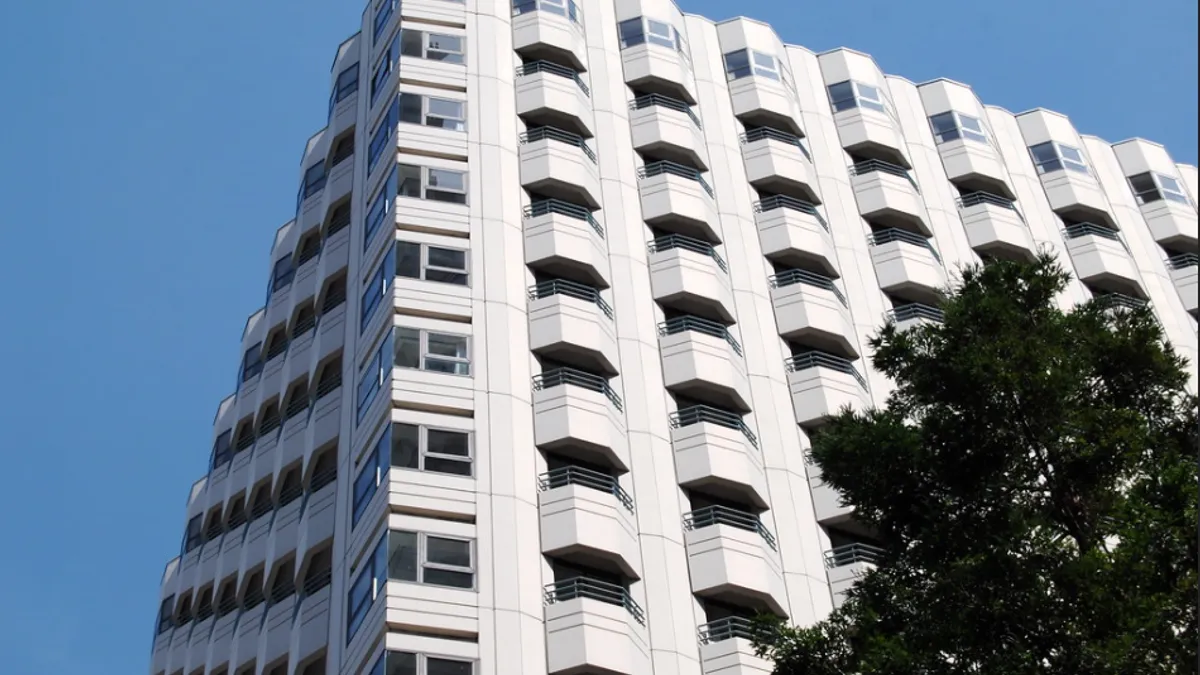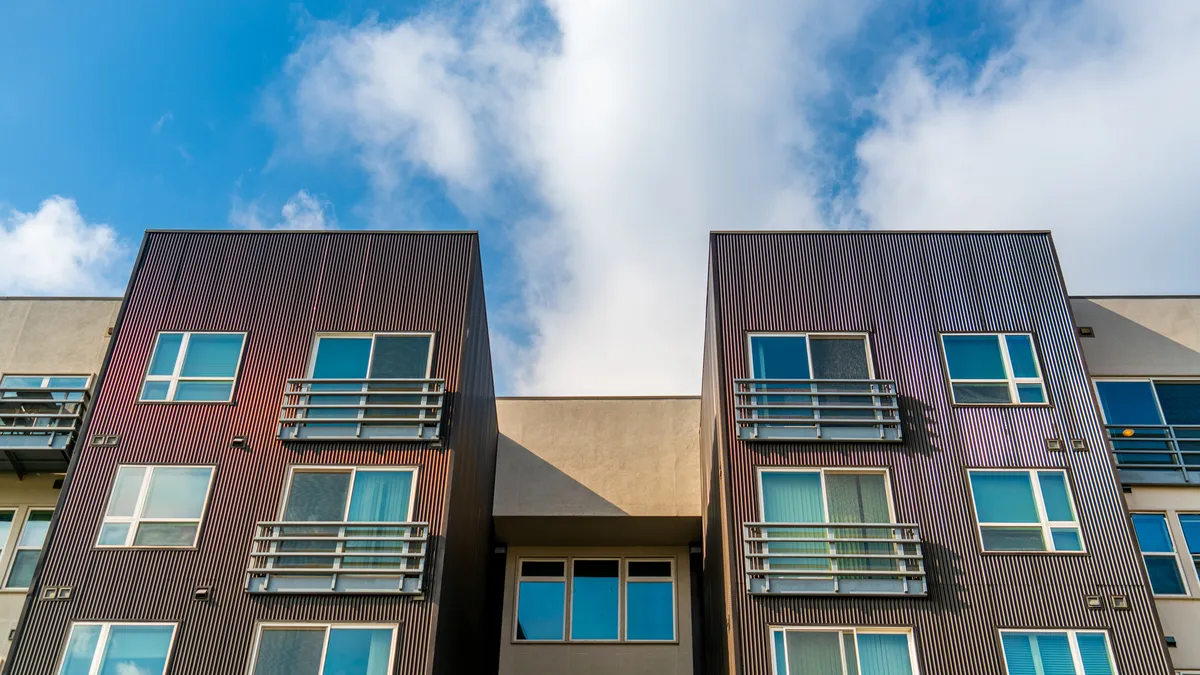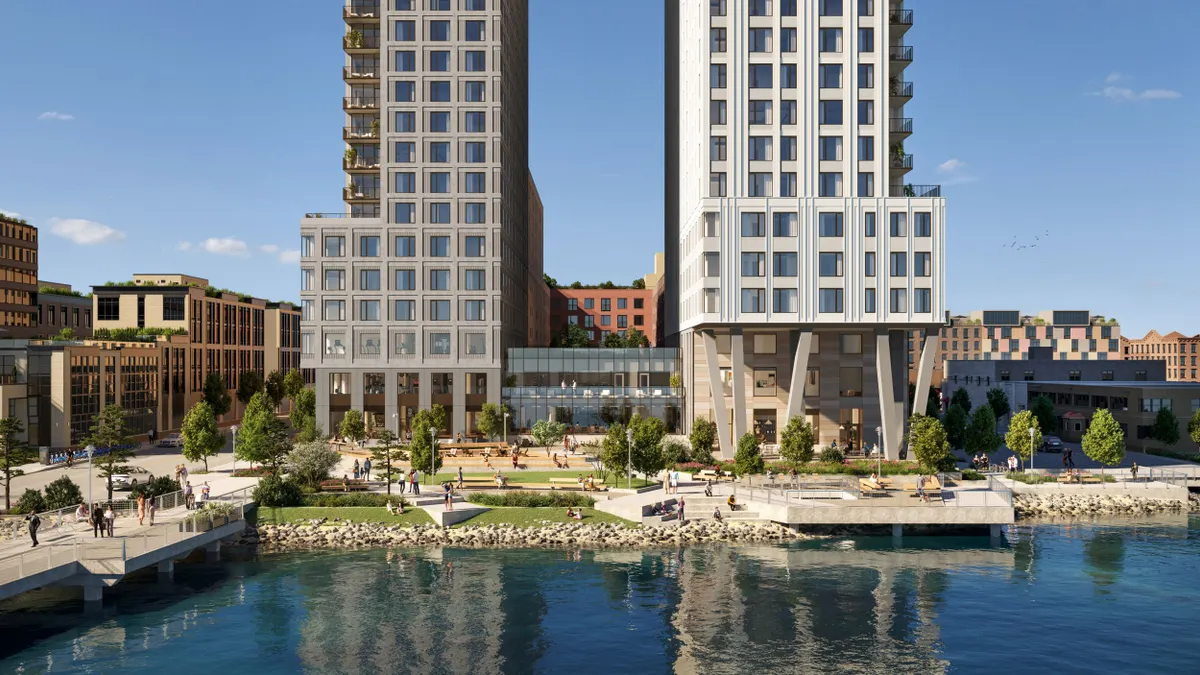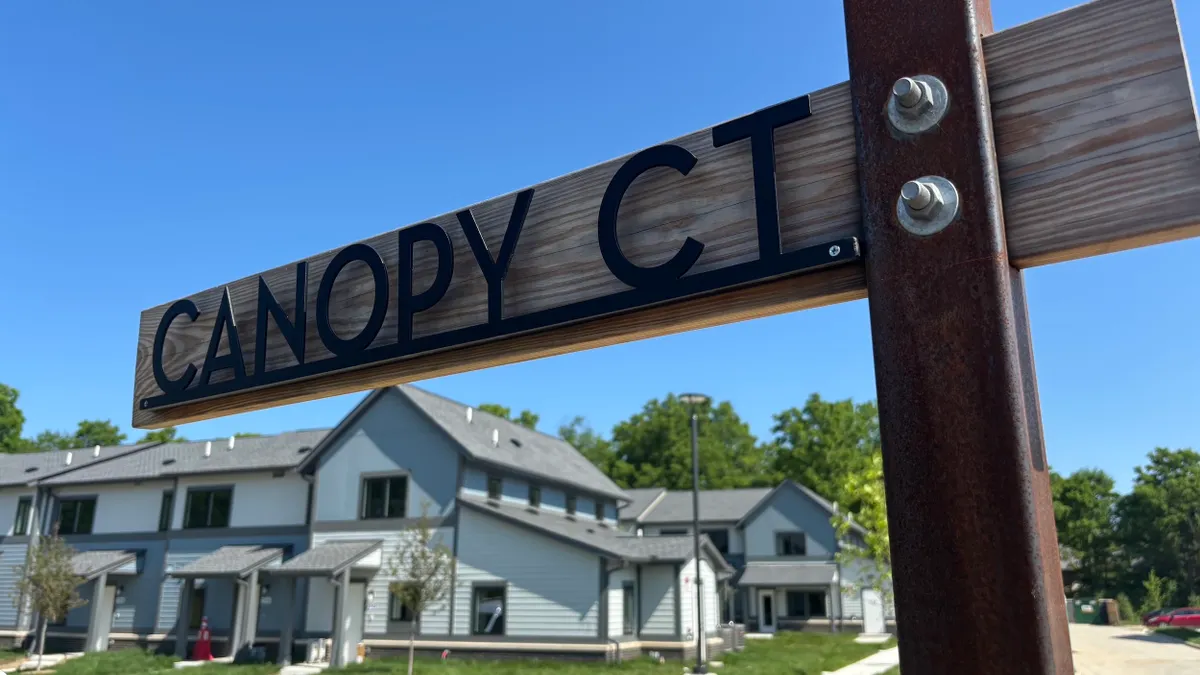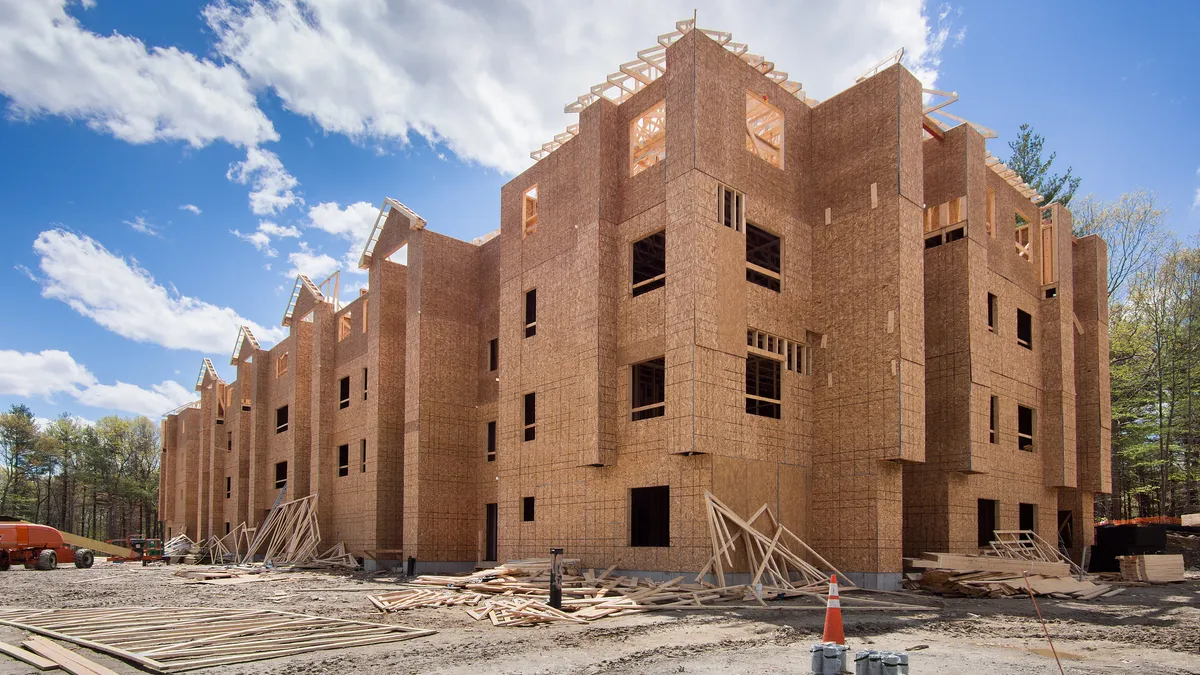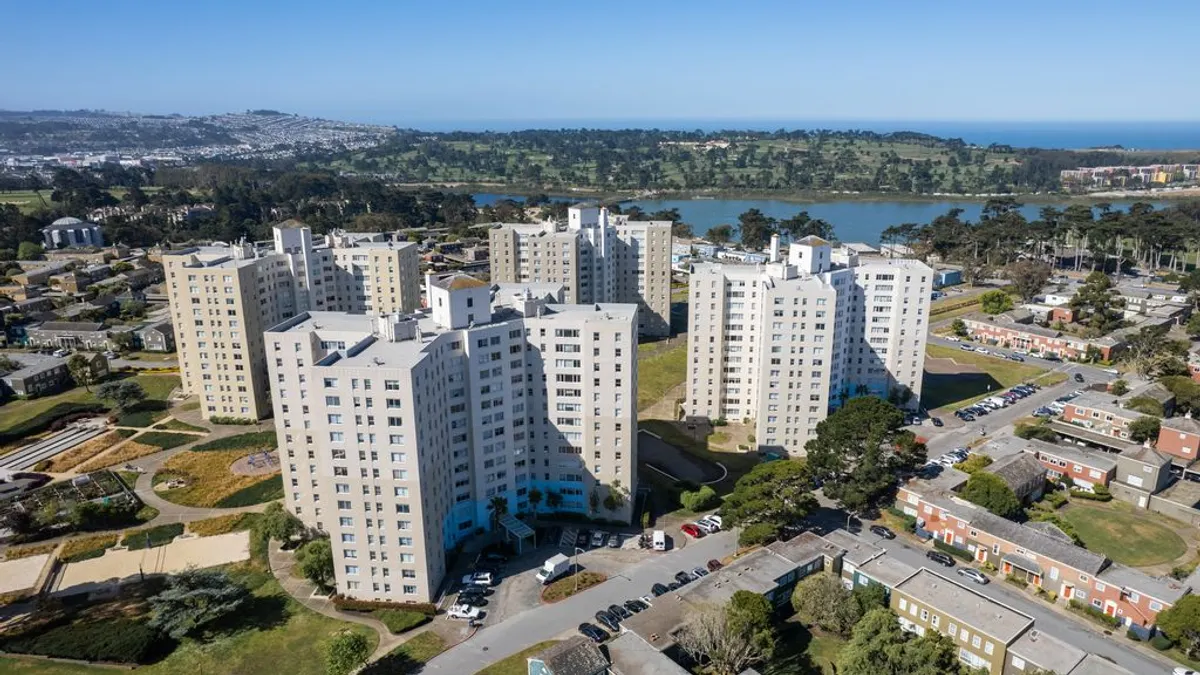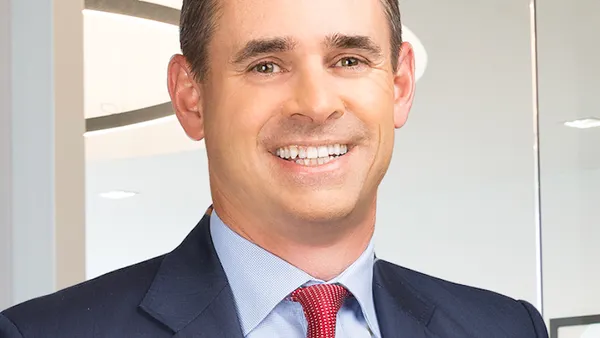When the COVID-19 outbreak shut down the world last year, Gary McLuskey, managing director of global design at Charleston, South Carolina-based Greystar, sent a memo to his team with notes about how he thought the global pandemic would change apartment life.
Eighteen months later, McLuskey looks right about a lot of things. His note to his team at Greystar, an international company that is also the largest apartment manager and developer in the U.S., pointed to more people working from home into the future and an increase in package and food deliveries, among other things.
These COVID-19-spawned lifestyle changes present a dilemma for apartment developers. Apartments aren’t constructed overnight. Usually, it takes a few years to build a project. So what might be popular today may not be en vogue three years from now when residents start streaming into a new building. That forces multifamily developers to make a bet that could be costly: Is it worth the risk to build apartments and amenities that cater to change brought on by the pandemic?
Many in the apartment industry say the answer to this question is yes. Some companies, like Austin, Texas-based student housing firm American Campus Communities, are permanently installing touchless soap dispensers, foot pulls and hand dryers to reduce touchpoints, and disinfectant wipe stands and touchless hand-sanitizing stations.
But many of the design and development changes are even bigger than that.
"It feels like after having gone through this year-and-a-half process [with COVID-19], things might never go back," McLuskey told Construction Dive.
Here are four ways COVID-19 is causing major changes in what an apartment property may look like in the future:
More flexibility
As COVID-19 spread in March 2020, offices in cities across the world closed. That forced apartment dwellers to carve out a space for telework.
Even after offices open back up, developers expect that trend to continue. "That idea of being able to work from home has become much more pronounced," said Joan Sizemore, the interior design director for Texas at Minneapolis-based architectural firm BKV Group.
To meet the demand for more space to work, apartment developers are making changes like adding built-in desks. To find room for these workspaces, developers may cut into other areas of the apartment. For instance, instead of having a 6- or 7-foot closet, Sizemore thinks developers may remove a couple of feet and add a 30-inch workstation. Or they could lower part of the countertop in the kitchen and make it a work area.
The need to carve out versatile, functional areas is also bringing back an old space-saving favorite — Murphy beds. Today, suppliers, like Boston-based Ori, are offering beds that do more than just pull down from the wall. They can transform into other uses.
"With Murphy beds, you can flip up the bed and it gives you a desk," McLuskey said. "But you can also flip up the desk, which could then turn into an exercise area."
Shared work spaces
Sometimes, apartment dwellers want to leave even the nicest units when they’re working from home all day.
Even before the pandemic, apartment developers recognized that residents wanted to get out and work among their neighbors. With more telework now, the popularity of those spaces should only increase.
Chicago-based apartment owner, manager and developer AMLI Residential recently bought a property that has 12 private offices that are fully leased with a waitlist, according to McCormick.
"Some of the offices have wonderful views with lots of natural sunlight while others are on an interior corridor – even the 6-by-6 offices without views are in high demand as some residents are eager to have a dedicated workspace that’s free from distractions," said James McCormick, head of acquisitions and dispositions at AMLI. "The coworking spaces and private offices are now a Top 3 amenity once you get past the pool and gym. Some of the private offices are being utilized as 'Zoom Rooms.'"
Apartment operators have watched how residents utilized these coworking spaces during the pandemic and have made adjustments. For instance, Greystar integrated a lot of one-person booths inside its workspaces as it noted the need for privacy in communal working spaces for phone calls or video conferences.
Developers and architects are also creating multiple places where residents can do their jobs.
"Instead of having one co-working room that we used to the call the business center, we are now providing those opportunities in multiple different places, whether it is around the pool area or in cabanas, the mailroom, booths or lounge spaces," said Aram Chahbazian, president and CEO of Irvine, California-based TCA Architects.
Getting outdoors
When residents are working at home working all day, sometimes they just need some fresh air. If they can access it without leaving their unit, even better.
"I think outdoor space in the unit, the balconies, is at a premium," McLuskey said.
But apartment developers and architects aren’t just limited to accessing outdoor areas in individual units. Whether on a roof deck, a podium deck or the ground floor, Chahbazian said companies are also exploring ways of opening amenity spaces to the outdoors by turning windows into sliding door systems.
"So instead of that 3-foot-wide door or even a 4-foot-wide door, you get a 30-foot-wide opening," Chahbazian said. "You open up the whole wall, literally, by sliding panels."
Of course, enjoying fresh air is even better when residents can bring their pets. During the initial phases of the pandemic, a lot of residents adopted animals to combat feelings of stress and isolation. While apartment owners had begun to increasingly cater to pet owners before the pandemic, McCormick thinks that the past 18 months have accelerated the evolution. He said these pet parks are "no longer throwaway space with an Astroturf rectangle adjacent to the parking deck."
"Some of them [pet parks] are positioned in the most scenic and woodsy areas of the property and in some cases are located on rooftops with panoramic views and pet obstacle courses," McCormick said.
Room for deliveries
Even before the pandemic, apartment operators were utilizing package rooms and lockers to accommodate an increase in deliveries. But in 2020, dealing with this avalanche of packages became an even bigger challenge as residents started ordering from their phones and computers instead of going to stores. AMLI has added package rooms to handle bigger items and cold storage for food deliveries.
"A property’s strategy for handling package deliveries is only as good as it performs during the holiday season’s tsunami of deliveries," McCormick said. "The quality of life for the residents is diminished if they can't get their package in timely and secure ways – and it can show up in ratings and reviews. Package deliveries and resident pickup can be a huge distraction for an otherwise very busy onsite staff that is focused on providing great customer service on higher-value requests."
Matt Shepard, vice president of construction at Chicago-based construction firm Kinzie Real Estate Group, says package lockers aren’t even enough to hold deliveries for some of his apartment development and owner clients.
"We had to find a way to reconfigure some of the mechanical rooms and make that space a little more efficient so that we could have an overflow [package] area," Shepard says.
Click here to sign up to receive multifamily and apartment news like this article in your inbox every weekday.



